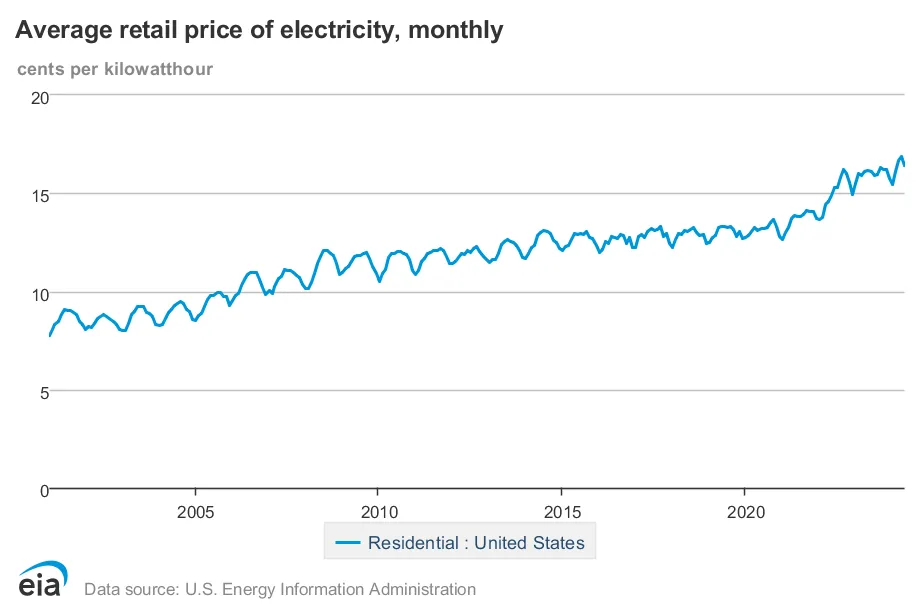What is the Average Electric Bill in 2024?
The average electric bill in the United States based on the typical monthly energy usage is $147.71.
This is based on the most recent pricing data from the U.S. Energy Information Administration (EIA) and the average monthly usage for homes.
Find out the average price of electricity in your state and how it compares to the rest of the nation.
Average Monthly Electric Bill by State Plus Washington D.C
2024-25 Electricity Forecast
The EIA is forecasting that the U.S. average residential electric price will increase by about 2% in 2025, however, depending on where you live it may be much higher. For example, in the PJM territories (Delaware, Illinois, Indiana, Kentucky, Maryland, Michigan, New Jersey, North Carolina, Ohio, Pennsylvania, Tennessee, Virginia, West Virginia and the District of Columbia) prices are expected to rise as much as 29%.
This is also in line with historical data, as electricity pricing has unfortunately increased by over 112.55% since 2001

Things You Can do to Lower Your Bill
Lower your energy usage.
Reducing how much electricity your home uses is the most straightforward way to lower energy bills. Some easy ways to do this are:
- Replacing air filters regularly
- Clean the cooling coils in your fridge/freezer
- When replacing appliances make sure to get Energy Star labeled products.
- Replace old, high-flow showerheads with water-efficient showerheads.
For more tips and in depth information check out this article.
Find a better electricity rate.
If you live in any of the following deregulated states you can choose who you purchase your electricity from and often can get a lower rate:
| Connecticut | D.C. | Delaware | Illinois | Maine |
| Maryland | Massachusetts | New Hampshire | New Jersey | New York |
| Ohio | Pennsylvania | Rhode Island | Texas |



